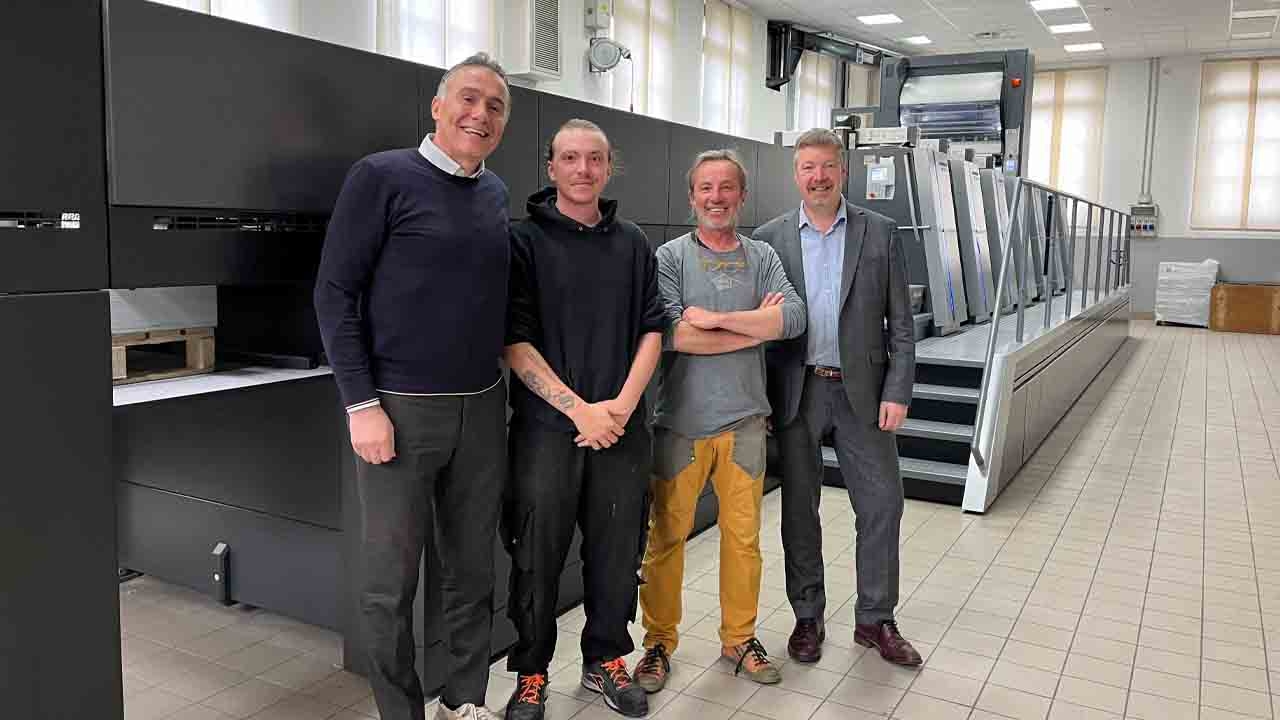Digital metal adds value at Tipografia Valdostana
Italian sheetfed converter Tipografia Valdostana can now proof metalized labels printed on its Heidelberg press using the Kurz Digital Metal system.

Tipografia Valdostana is a sheetfed label and package printing house based in the stunning Aosta Valley on the Alpine border with France. Founded in 1896 as an in-house printer to the Catholic church, Tipografia Valdostana remains a family-owned business – still with its own internal publishing house.
Managing director Paolo Perrin worked at Tipografia Valdostana from the age of 20 and inherited the company from his uncle, a priest, in 1996. When L&L visited the company, Perrin’s son Sebastiano was running the Heidelberg press and was heavily involved in all aspects of production.
After taking over his uncle’s business, Perrin set about diversifying Tipografia Valdostana from religious and commercial publishing into packaging.
Tipografia Valdostana sells to a wide range of commercial markets including high-quality ‘coffee table’ books, catalogs, brochures, diaries, magazines, calendars and posters. In the packaging space, it prints and converts a wide range of high-quality wet-glue labels, mainly for wine and food applications.
Labels account for around 5 percent of the company’s business, with most packaging work going to folding cartons and preprint tube laminates.
The centerpiece of Tipografia Valdostana’s production facility is a highly automated Heidelberg Speedmaster XL 106-6L press. ‘The automated plate mounting alone led to a 30 percent reduction in makeready time compared to manual mounting,’ recalls Perrin.
The press can be run from any point across a network.’
The DM-Smartliner allows us to achieve exactly the same metallic shades as on the offset press. This is an amazing service to offer brand owners
The Speedmaster XL 106-6L is fitted with in-line die-cutting for adhesive labels and a Foilstar in-line cold foil lamination unit.
‘The advantage of Foilstar compared to traditional hot foiling is that lamination takes place in-line. It can be extended to the entire surface of the sheet and can be overprinted, obtaining an infinite range of metallic shades on paper with absolute registration accuracy,’ says Perrin.
Proofing metallic print
Perrin has worked closely with foil supplier Kurz to develop a process that allows brands to visualize multi-color foiled prints before committing to full-scale production runs.
Upstairs in the design department sits a Kurz DM-Smartliner digital foiling machine, which produces test prints and mock-ups using Kurz’s Digital Metal system.
The DM-Smartliner is a SRA3 format foil transfer system, which uses toner-based inks (or electro-inks) as an adhesive in place of UV-cured adhesives.
Tipografia Valdostana uses a Heidelberg Versafire CMYK toner press to print the ‘target’ image with a black toner. The sheet is then transferred to the DM-Smartliner where it is heated to the point where the toner becomes tacky, and the foil will adhere.
The Digital Metal metallization is transferred by the DM-Smartliner by a removable PET carrier.
Consistent temperature is critical to the final result with Kurz’s transfer on toner process. The roller that presses the foil onto the substrate is heated and has an intricate IR heating system as well as edge zone heating. The heating system ensures temperature consistency over the entire surface of the stamping roller during the whole process. Accurate surface temperature is key to the high quality of the decoration.
A wide range of DM-compliant foils are offered by Kurz, including digital metal shades, diffraction and holographic foils, all of which can be over-printed.
This dry metallization process does not require further adhesives or drying/curing units and greatly simplifies the deinking and recycling process.
After the foil has been applied, the sheet is re-registered through the Versafire and overprinted to achieve multiple metallic shades.
This whole process is calibrated to the Heidelberg Speedmaster and in-line Foilstar unit, which guarantees a match between the metallic proof signed off by the customer and the actual production run on the Heidelberg press. The DM-Smartliner is also used to produce hyper-short runs of promotional prints.
The finished sheets are creased and cut on an x-y plotting table using a programmable stylus cutting head.
‘This service allows a brand to try different variations of a design and to choose which one to take to production,’ explains Paolo Perrin.
‘The DM-Smartliner allows us to achieve exactly the same metallic shades as on the offset press. This is an amazing service to offer brand owners. It also means we can charge more for this value-added service. We can also use the DM liner to produce micro production runs, so it has great flexibility.’
Kurz will be demonstrating its digital metallization technology at Labelexpo Americas 2024.
Stay up to date
Subscribe to the free Label News newsletter and receive the latest content every week. We'll never share your email address.


